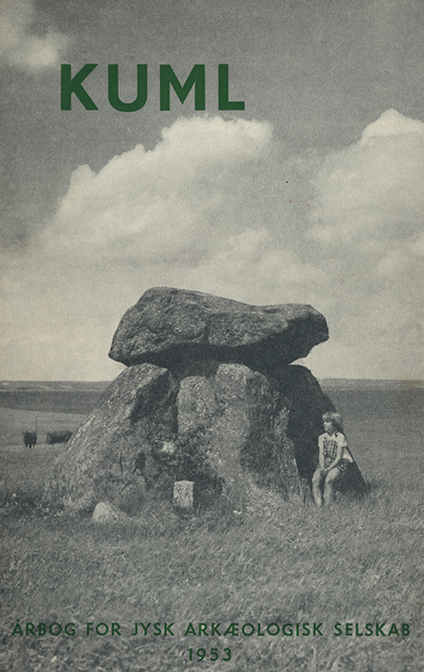Fangstfolk på Selbjerg
DOI:
https://doi.org/10.7146/kuml.v3i3.97111Keywords:
Fangstfolk, Selbjerg, Hunters, FishersAbstract
Hunters and Fishers at Selbjerg
On the north side of Limfjord, at Selbjerg on the southwestern tip of Øland in Øster Hanherred, recent excavations have revealed traces of a 4000 year old colony of the Pit-Ware folk, a culture well-known in Sweden but hitherto rarely found in Denmark. It was a culture of fishers and hunters of seals and whales, though pigs and occasionally cattle were kept. In Denmark the culture has been found on the islands and coasts of the Kattegat, often on Ertebølle sites.
The site, excavated by the author under the auspices of the Aalborg Historical Museum, was revealed as a kitchen-midden of oyster and other shells, now 7.2 metres above sea level, but at the time of the settlement lying actually on the 15 metre broad shoreline. The midden consisted of an earlier and a later deposit, separated by a layer of sand, about 12 cms. thick, marking a rise in the sea level. Below this break in the sequence only a core axe, a certain amount of flint swarf and a few undecorated potsherds were found, the latter, however, resembling New Stone Age ware rather than Ertebølle.
Above the sand layer the excavation revealed traces of Pit-Ware culture. The type characteristic of this culture, the cylindrical flaking block, was found throughout the upper deposit. In contrast to the contemporary Passage-Grave sites, and to the Swedish Pit-Ware settlements, there was in general a scarcity of artifacts, whether of pottery, flint or bone - although other bone was preserved in quantity. Flint swarf was often concentrated in the few metres around a cylindrical flaking block, flint being otherwise sparse - about 75 fragments to the square metre. Only three fragments of blade arrowheads were found, only one with tang preserved, though to these should be added three complete specimens found in an earlier reconnaissance.
The potsherds found are all reddish yellow in colour, of coarse clay plentifully mixed with quartz and poorly fired. They are 5-11 mms. thick and, at least in one case, built up of strips of clay (fig. 2). Sharply distinguished from these is a Passage-Grave vessel (fig. 10) found at the bottom of the upper deposit in an undoubtedly undisturbed layer.
Above the kitchen midden was a cobble paving which must originally have covered the whole area, and behind it a semicircle of dark earth had been dug into the slope of the hill (fig. 1, rows A-C). Though no post holes were found these features suggest a period of permanent habitation.
Among the bone material those of red deer predominated, followed by those of pigs and cows. Seal, bear and porpoise were also represented, as well as many birds, including seasonal migrants both of winter and summer species.
C. J. Becker presumes in his article, that the pit ware people did not settle down. (Aarbøger 1950 p. 255). This point of view seems to be contradicted by the Selbjerg find. Pig and cow beeing represented among the bones may indicate that the pit ware people really settled in dwelling places. And when you find the blade arrowheads in the passage graves, they don’t absolutely need to be of a pit ware culture origin, the passage grave people itself having excellent flint smiths. (Aarbøger 1950 p. 213-220).
Oscar Marseen
*
In the summer of 1951 a similar settlement site was investigated by Sylvest Grantzau of Aalborg Historical Museum at Gjøl about 10 kms. from Selbjerg. Here too there was a kitchen-midden and a semicircular excavation in the hillside with a cobble paving below.
Another settlement at Nr. Tranders has also been identified, giving 50 cylindrical blocks and 10 blade arrowheads. Here, however, all objects found lay in the ploughed up layer immediately above undisturbed subsoil.
Oscar Marseen
Downloads
Published
How to Cite
Issue
Section
License
Fra og med årgang 2022 er artikler udgivet i Kuml med en licens fra Creative Commons (CC BY-NC-SA 4.0).
Alle tidligere årgange af tidsskriftet er ikke udgivet med en licens fra Creative Commons.


